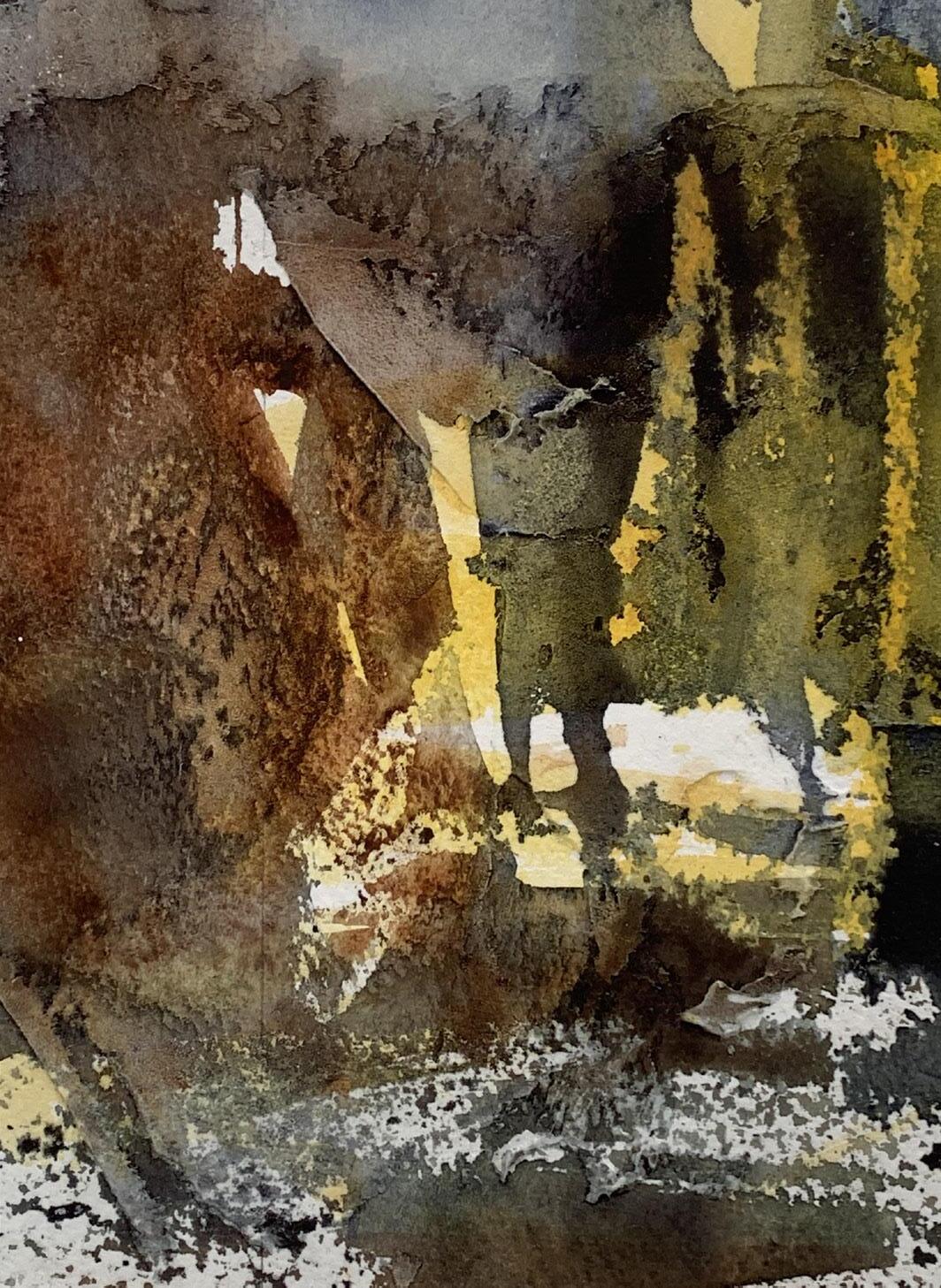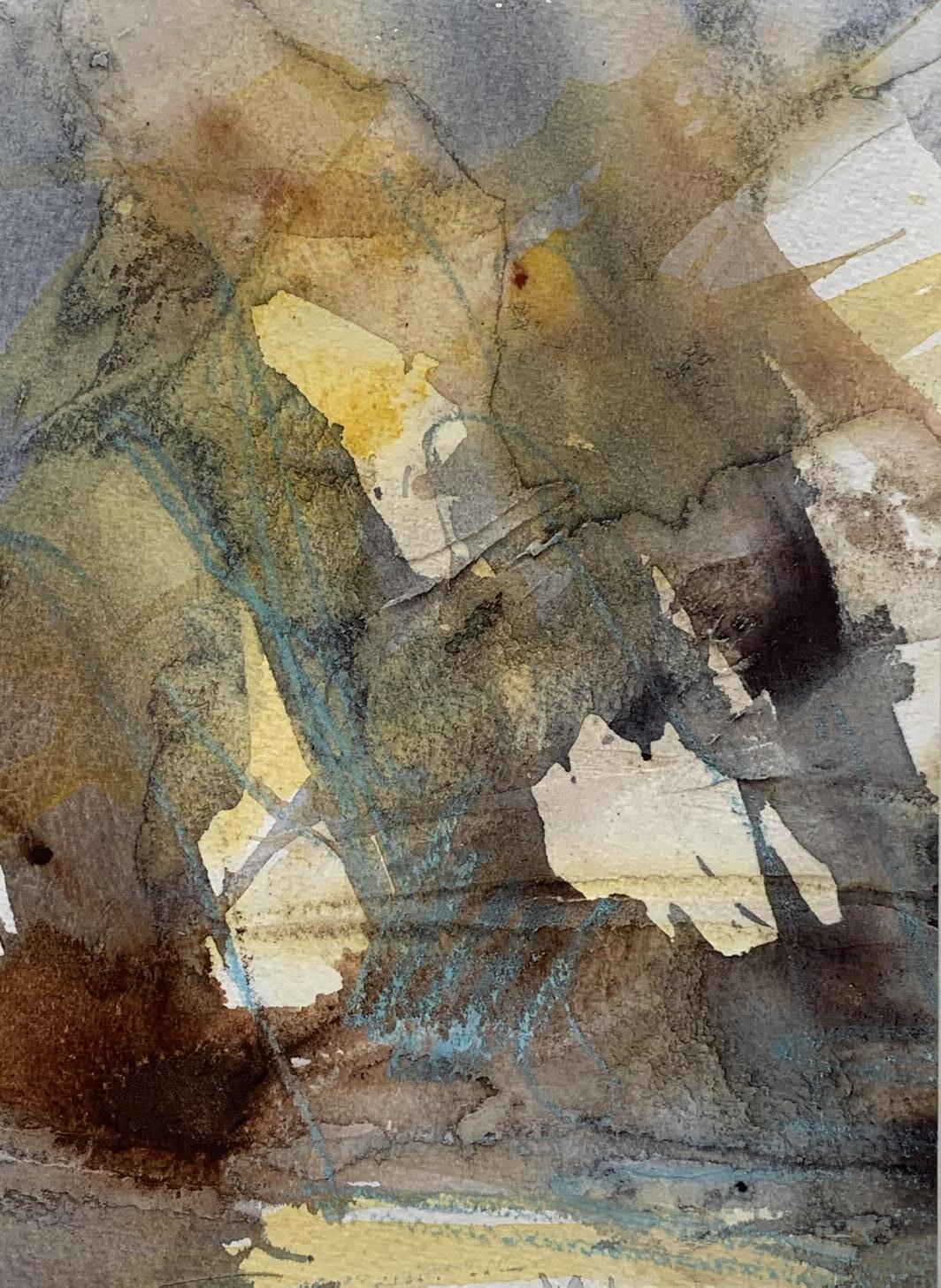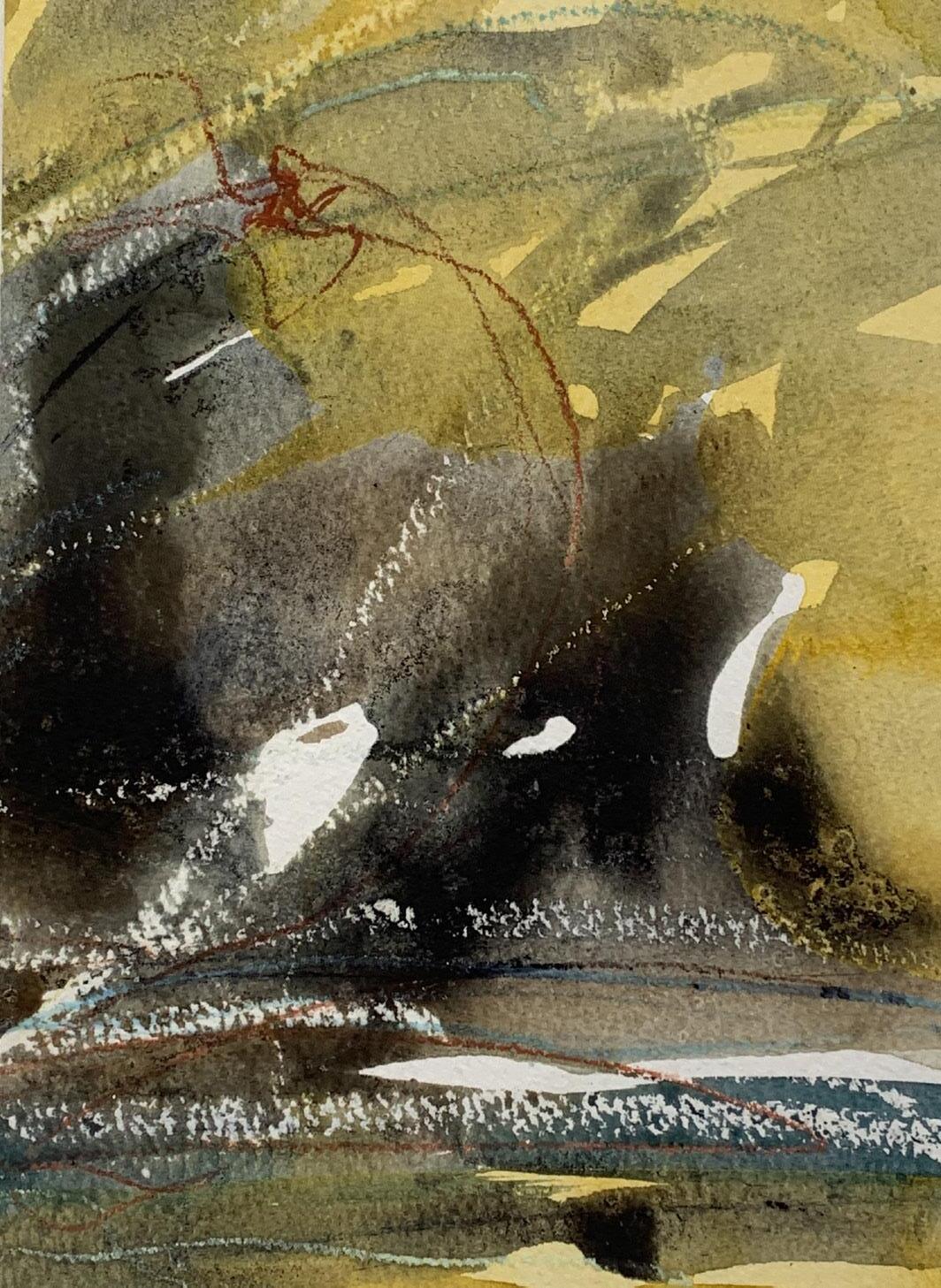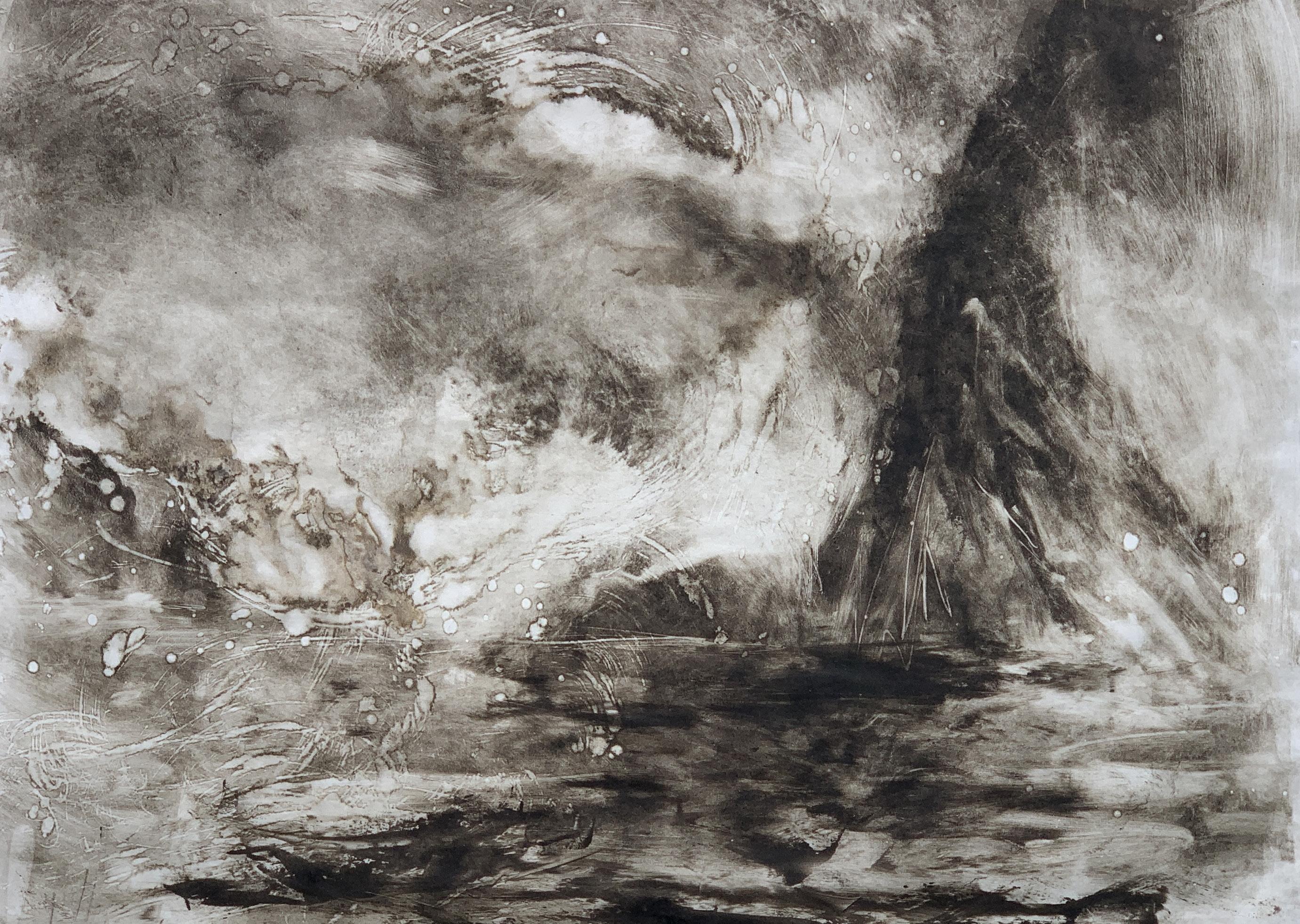
17 October - 21 November 2025
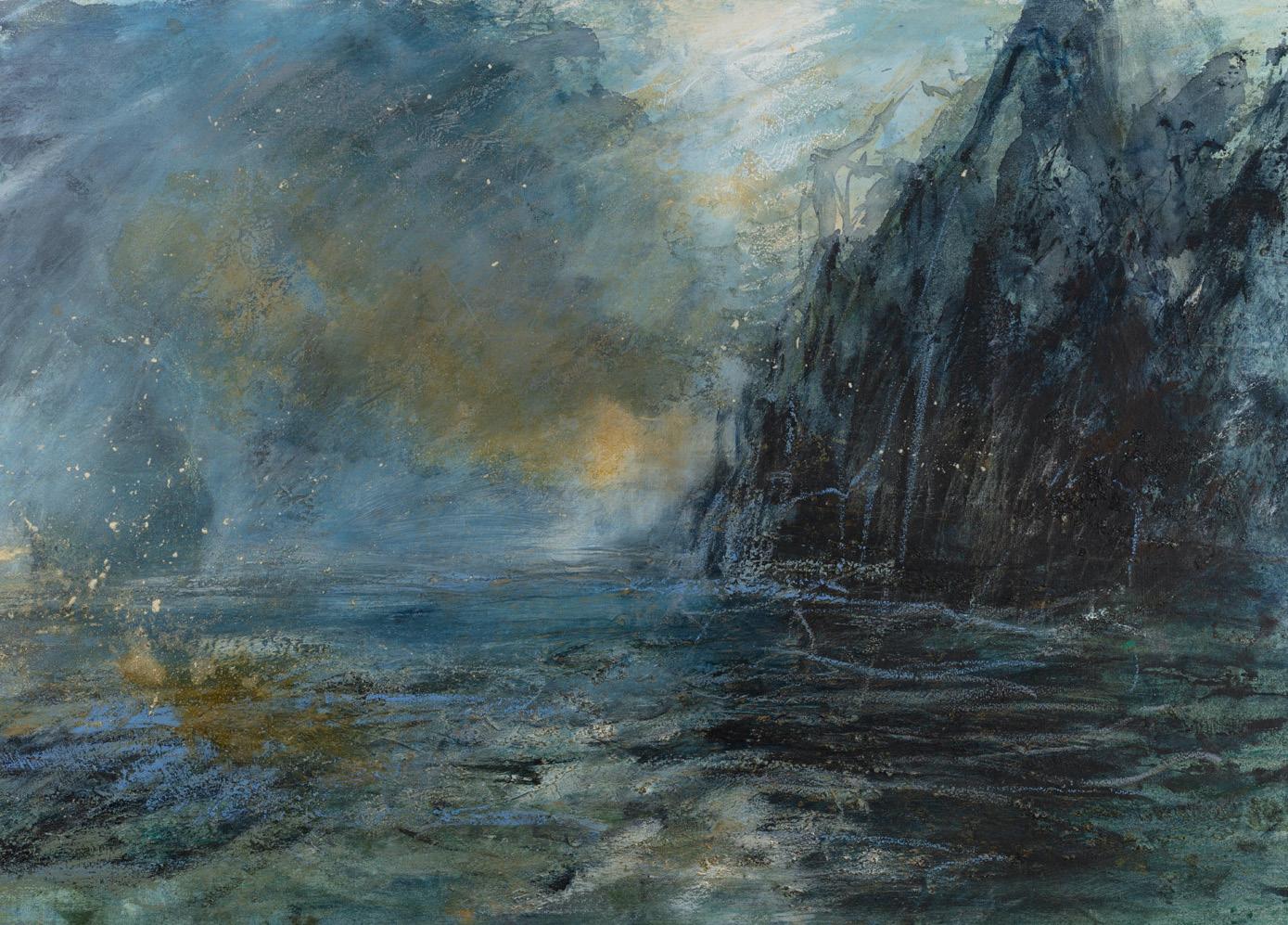


17 October - 21 November 2025

I’m standing in the Waterloo studio of Geraldine van Heemstra when I have one of those extraordinary moments that only the most powerful of paintings can bestow: I’m no longer in her calm, orderly working space (white shelves of books and driftwood, swinging hammock, view onto the London skyline). Instead I’m in the islands and highlands of Scotland – raindrenched, windblown, watching the heavy clouds split to reveal a sudden shaft of divine light.
Van Heemstra’s latest works (the paintings, drawings and sculptures exhibited at Winsor Birch) evoke a Scottish wilderness so vivid and elemental that, later, when I too am walking across a storm-struck Scottish island, I feel as though I’m inhabiting one of her paintings. This is the miracle of the finest art – it lifts us from our quotidian hum drum lives and drops us into another world. And if we should be lucky enough to find ourselves, one day, in that other world (for real), we see it with refreshed eyes. Great artists invite us to look, observe, see, as they do. They sharpen our gaze, making our lives richer and more meaningful. Which is exactly what van Heemstra does.
So what is the world that van Heemstra invites us to see? And what sort of landscape encounter does she nudge us into having?
For me, this is simple. The world she entices us into, is one that thrills, excites and inspires. A wild, natural world once routinely experienced by our ancestors but often unfamiliar and intimidating to today’s city dwellers.
Van Heemstra – a walking artist who experiences her landscapes on the move - urges us out and into this lost world of wind, rain, storms. ‘I don’t like still, summery days with blue skies,’ she tells me. ‘Those are not the days when I feel truly alive’. Instead, the ideas and images that seeded this exhibition came as she walked with her sketchpad, paints, palette, pens and pencils, into the most remote corners of Scotland, in the most dramatic of weathers.
In this way, van Heemstra asks us to imagine life away from the ease and convenience of modernity. And she shows us how
Cover image: Talisker Bay (detail), mixed media on linen, 70 x 50 cm
Backcover: Stacs in Storm, monotype on Japanese Kozo paper, 64 x 49 cm (photos: Juliet Sheath)
to re-connect with Nature at its rawest and least predictable. For van Heemstra, this is also Nature at its most spiritually transformative. Van Heemstra’s landscapes capture not only the wilderness of her beloved Scotland, but also its sacred and eternal qualities, its ancient forms, its astonishing celestial light, so that we too can feel utterly and truly alive.
Being on foot in unpeopled, wild landscapes has always carried an element of risk and danger. And so van Heemstra’s oeuvre also reminds us of the terrible brevity of life. This is not a cosy, comfortable place of bucolic skies and fragrant flowers. And yet, guided by her unflinching eye, we too can imaginatively feel the rain lashing against our skin. We can see the yellow light scattering over rocks and lochs. We can hear the gush of wave and waterfall. We may even smell the wet black earth, the salty air. Indeed, van Heemstra reminds us that this is how we fully comprehend and grasp a landscape, this is how we find its soul – not with our mind but with our senses. She calls it the ‘hand-mind-eye-heart connection’ and it lies at the heart of her practice. Life, she seems to say, is too short and beautiful to sit inside waiting for the sun to shine: we need to feel its full elemental force – now!
In her work there are shades of Turner and Norman Ackroyd, with a nod to the Dutch masters she studied 30 years ago, as a student and then as a fine art restorer. But, above all, van Heemstra brings to mind the dazzle and courage of Joan Eardley who famously painted the North East Scottish coast in all weathers, roping her easel and canvases to trees and buildings, amid tempestuous winds and fierce rains. Like Eardley, van Heemstra powerfully captures the brooding skies pronged with light, the ferocity of falling water, the wind-buffeted alchemy and the electric energy, of remote Scotland. Like Eardley, she grapples with how to understand (not merely record) a landscape. But van Heemstra also brings a quiet order to her work, so that rather than feeling intimidated or frightened we feel emboldened: we too can connect with this vanishing world and we too can find the pulse and soul of a place.
So why was I out walking in a Scottish storm this summer? Because van Heemstra’s ‘Windswept’ paintings had coaxed me out with their exhilarating refrain: wind, water, space, sky - this is how we truly feel alive.
Annabel Abbs
Journalist and author, August 2025
Geraldine van Heemstra’s practice evolves around her collaboration with the raw elements of the land. By immersing herself in the landscape her work becomes a translation of this vital engagement. Through the elemental energy in her work she expresses the link between human and non-human interaction, reflecting and reinforcing the intangibility of wind and weather, questioning our position as the human subject in the artistic creation.
Van Heemstra studied at Utrecht University with an MA in History of Art in 1992, followed by a post-graduate degree in the Conservation of Easel Paintings at the Courtauld Institute of Art in London, graduating in 1995. After a career in the conservation of paintings, she focused on her own art from 2004 and graduated with an MA from City & Guilds of London Art School in 2019.
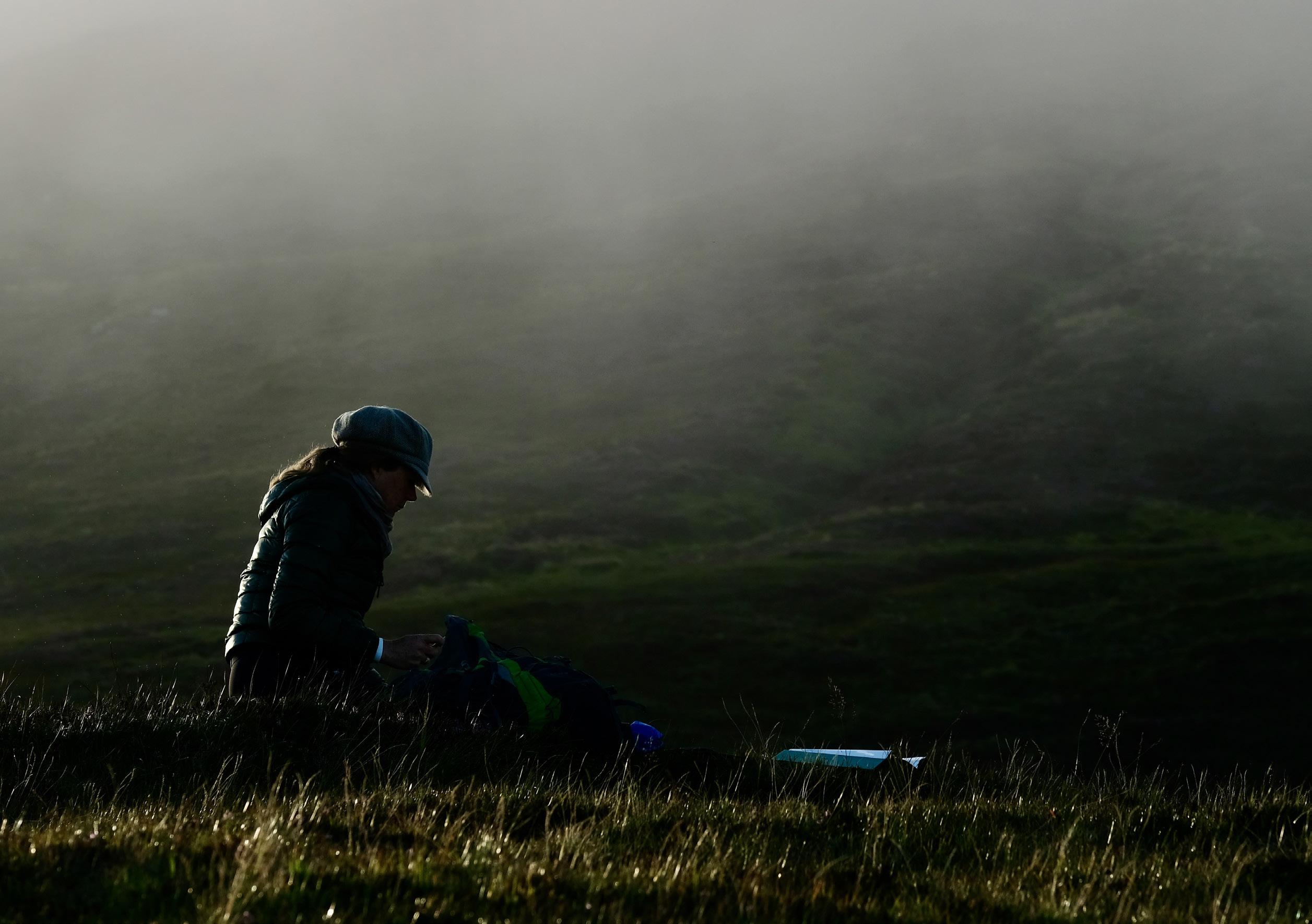
“Wild landscapes remind us of the unsearched territories of the mind Ancient rhythms of the earth have insinuated themselves into the rhythms of the human heart”
– John O’Donohue
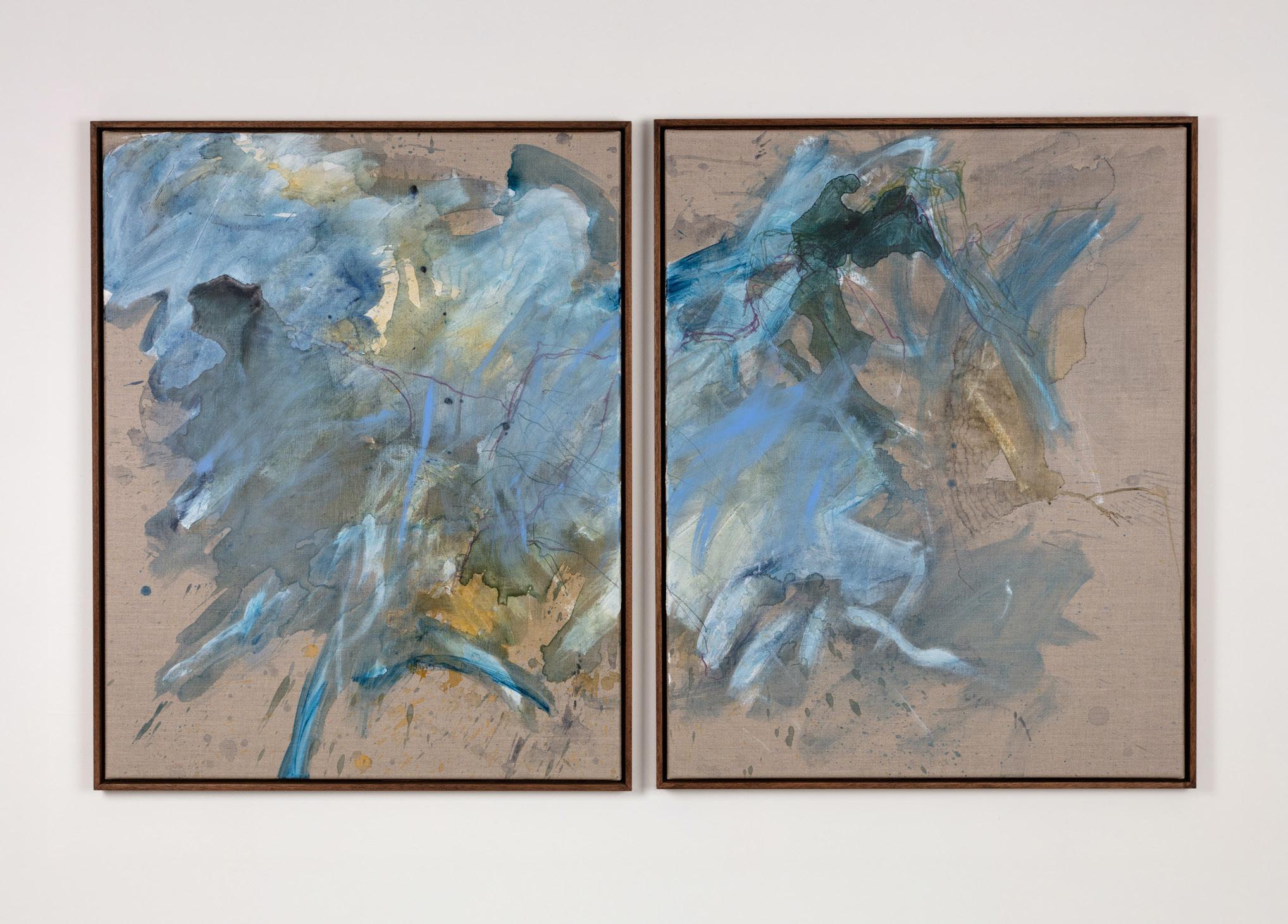

With devices made from naturally sourced earthly materials, like branches, driftwood and dried heather, van Heemstra records the intangibility of the wind.
These devices act as receptors (pictured left) of the subtle forces of nature.
The marks made by these devices (seismopolygraphs), her sketchbooks and plein air paintings inform further larger work in the studio.
Pushing this idea of collaborating with the intangible wind further, van Heemstra records the sound of the wind by making Aeolian harps, also made with found objects.

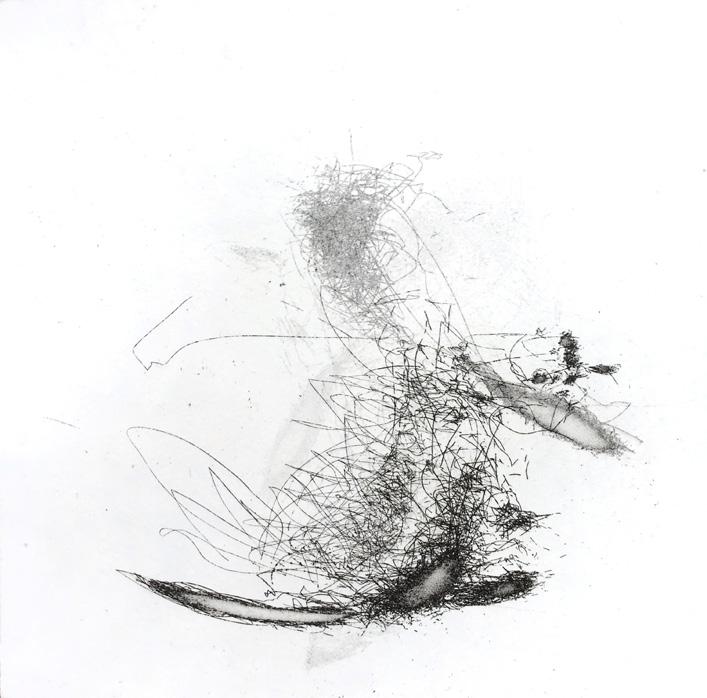
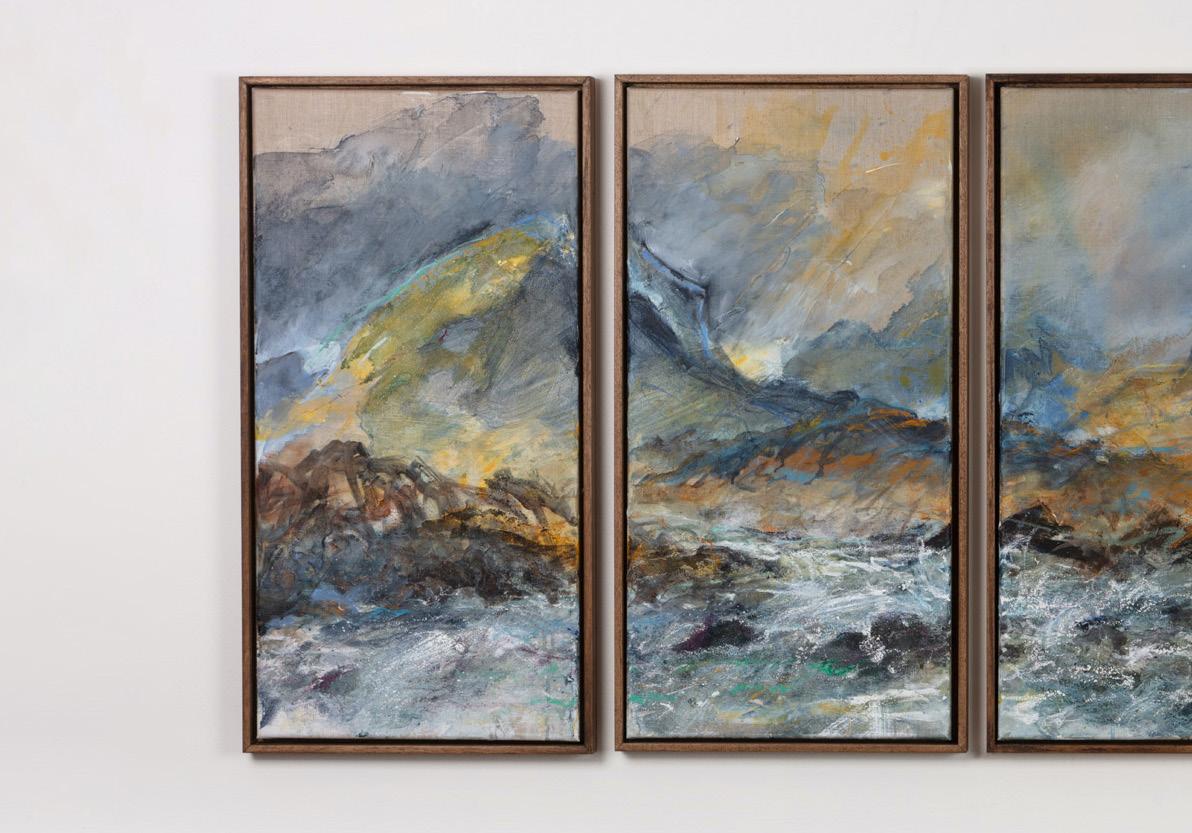
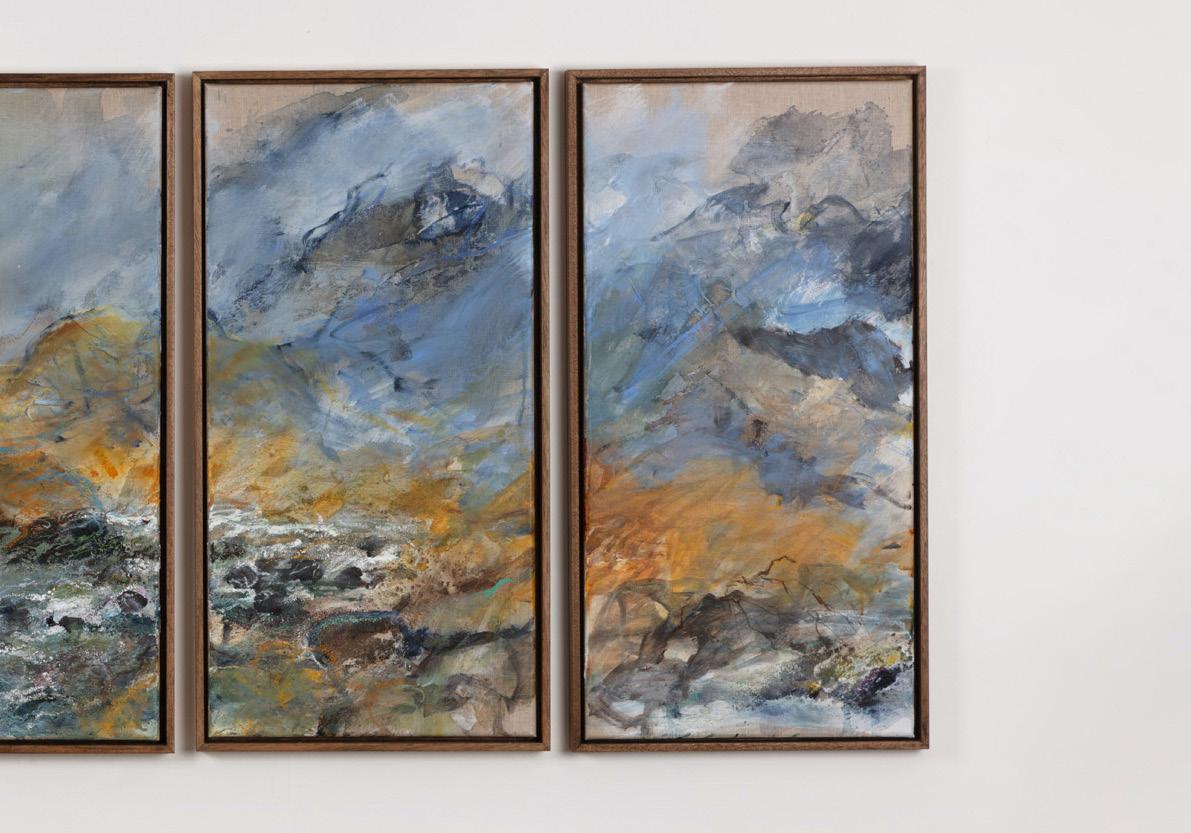
Where Two Rivers Meet mixed media on linen
80 x 40 cm each panel of a pentaptych total width 220 cm

Shifting Realities III (triptych) monotype with watercolour and peat on Japanese Kozo paper
49 x 99cm

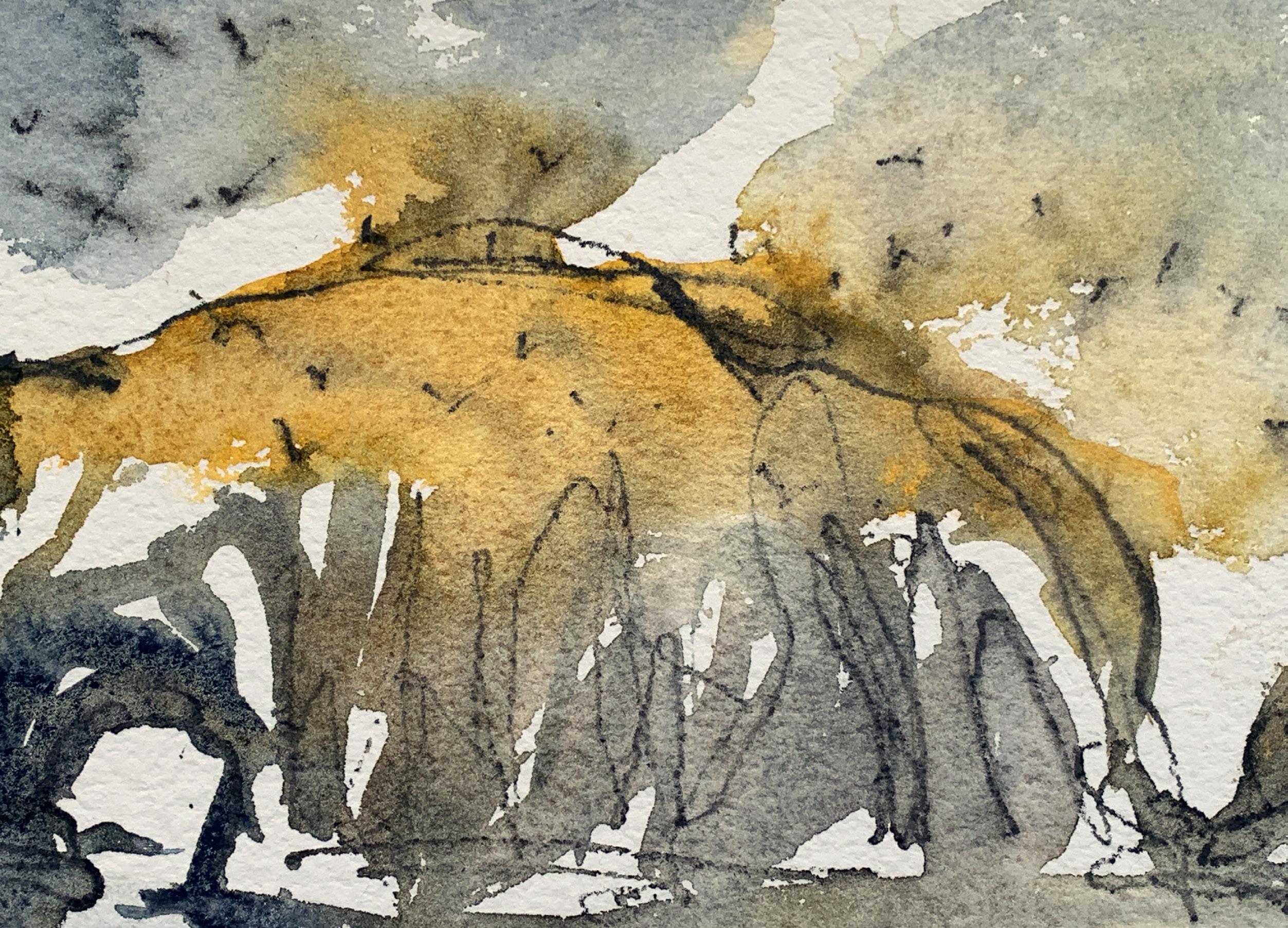
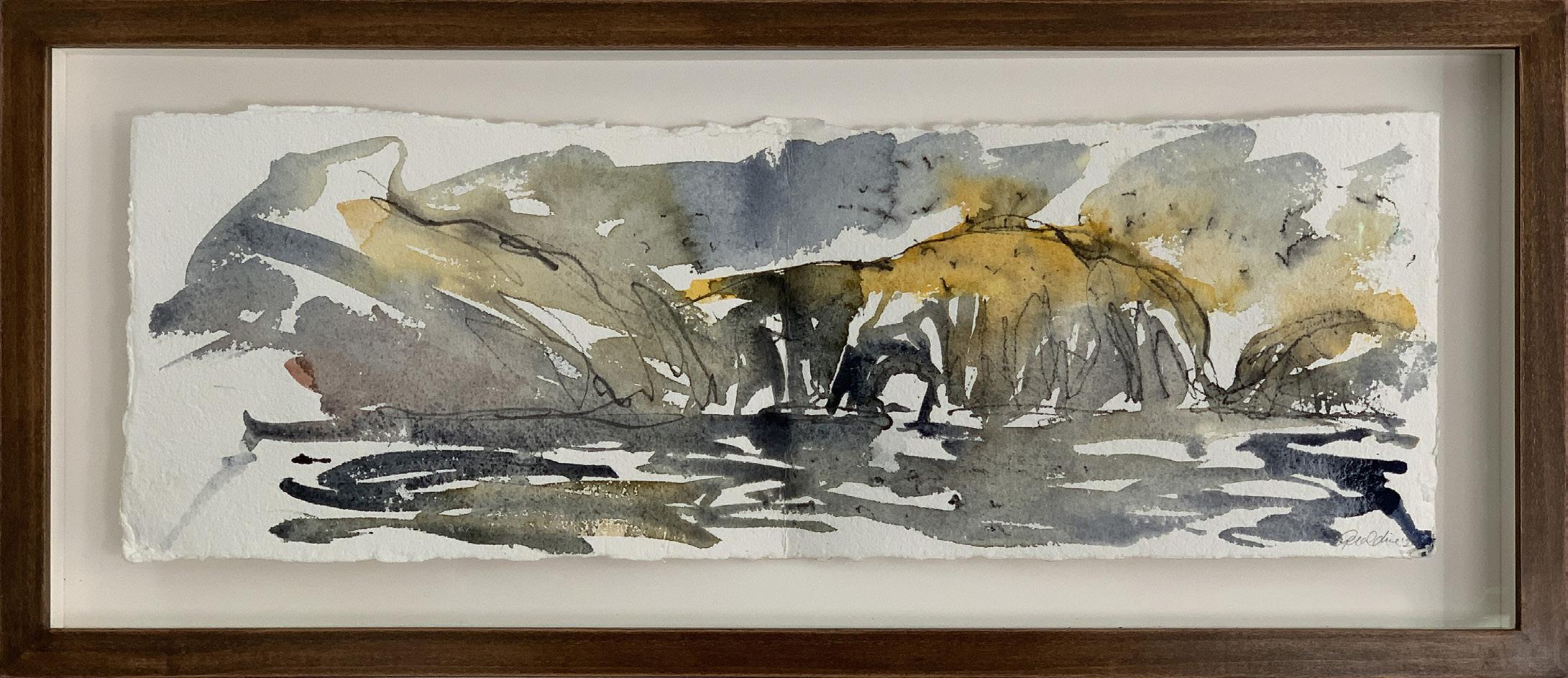
Shiant Isles watercolour
20 x 57.5 cm detail opposite

